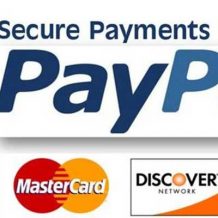The Basics of the Payment Processing Landscape

In 2014, and even a bit in 2015, the landscape of merchant processing looked pretty grim. Not a lot was happening at the consumer level, technology wasn’t very compelling and good deals were hard to find. Businesses didn’t have a lot of options when it came to transferring money online, and most just went with whatever services were offered through their bank or merchant account.
This led to a lot of very expensive fees an inefficient money transfers. Today, things look very different and the future is rather bright for companies who utilize credit card processing. There are several reasons why that is the case.
New Technology
Smartphone adoption rates are higher than they’ve ever been, which means that everyone around you has the potential to carry their wallet in their pocket without ever carrying cash. These devices are secured, sometimes with multiple levels of encryption, and they are easy to use as a means for transferring money.
Merchant accounts are adapting by adding new ways to pay at the terminal. Customers can use digital wallets, mobile devices and more. This goes against the traditional credit card system, but consumers don’t seem to mind. It’s safer to pay with a phone, or to pay online, meaning more of us can buy what we want when we want.
Integration
The missing piece of the puzzle isn’t the willing consumer, it’s a business ready to adopt this new technology. It’s been difficult to find a good system that you can link to an existing merchant account, and provide an ecommerce component. Today, that’s no longer the case as there are more options than ever before.
Some of these services are tied to an account, but not all of them. As compatibility improves, it will be easier for consumers to consolidate their wallets.
Right now, the landscape is still fractured but that won’t always be the case. Soon, digital wallets on your mobile device will be the standard. You’ll be able to receive your paycheck over mobile, pay your bills and buy your groceries, all with nothing more than your phone.
Better Security
Of course, the innovation everyone will benefit from (but isn’t the most exciting) is better security. Transactions on these new systems use an anonymous instance, so everything takes place in a vacuum of sorts. This makes it harder for hackers to detect, and nearly impossible for them to extract any meaningful data from.
Read a Related article Below:
Why Do Your Credit Card Terminals Have Chip Readers?
read more








